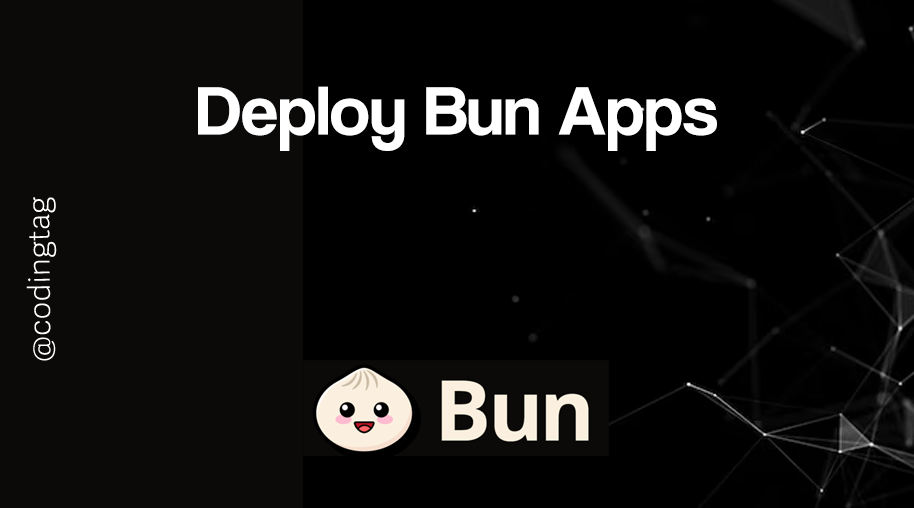Bun + Redis Guide
0 2009
🔌 Introduction to Bun + Redis
Pairing Bun, the ultra-fast JavaScript runtime, with Redis, the blazing in-memory key-value store, opens up a whole new world of performance-driven development.
Whether you're caching API responses, storing sessions, or building a real-time leaderboard, Redis is the tool, and Bun makes it lightning fast.
🚀 Why Use Redis with Bun?
- ⚡ High-speed caching: Redis operates entirely in memory, perfect for speeding up API responses.
- 📊 Data structures: Support for hashes, lists, sets, sorted sets, and more.
- 🧵 Pub/Sub support: Build chat apps, notifications, or real-time features with ease.
- 🎯 Session storage: Lightweight and fast storage for sessions or temporary auth tokens.
📦 Installing Redis Client in Bun
Currently, the most Bun-compatible Redis client is ioredis. Install it with:
bun add ioredis
Make sure Redis server is running locally or remotely. You can install Redis using your OS package manager (like brew install redis on macOS).
🔗 Connecting Bun to Redis
// redis.ts
import Redis from "ioredis";
const redis = new Redis(); // defaults to localhost:6379
export default redis;
This single file lets you import and use Redis anywhere in your Bun project.
📥 Basic Redis Operations
Let's try some simple key-value operations in Redis using Bun.
// app.ts
import redis from './redis.ts';
await redis.set("greeting", "Hello from Bun + Redis!");
const value = await redis.get("greeting");
console.log("📨 Redis says:", value); // Output: Hello from Bun + Redis!
These basic commands demonstrate how Redis stores and retrieves data asynchronously, even within Bun’s superfast runtime.
🧠 Using Redis Data Structures
Redis shines beyond simple key-value storage.
Here's how to use a few advanced structures:
// Lists
await redis.lpush("tasks", "build", "test", "deploy");
const tasks = await redis.lrange("tasks", 0, -1);
console.log("🗂️ Task list:", tasks);
// Hashes
await redis.hset("user:1", { name: "Aditya", age: "25" });
const user = await redis.hgetall("user:1");
console.log("🙋 User details:", user);
// Sorted Sets
await redis.zadd("scores", 100, "Alice", 120, "Bob");
const leaderboard = await redis.zrevrange("scores", 0, -1, "WITHSCORES");
console.log("🏆 Leaderboard:", leaderboard);
📡 Using Redis Pub/Sub in Bun
Redis is often used for messaging or signaling between services.
Here’s a simple example using Pub/Sub:
// publisher.ts
import redis from "./redis.ts";
setInterval(() => {
redis.publish("news", `📰 Update at ${new Date().toISOString()}`);
}, 2000);
// subscriber.ts
import Redis from "ioredis";
const sub = new Redis();
sub.subscribe("news", () => {
console.log("🟢 Subscribed to news channel");
});
sub.on("message", (channel, message) => {
console.log(`🔔 [${channel}]: ${message}`);
});
This allows you to build event-based systems or real-time feeds — perfect for dashboards, games, and chat systems.
🛡️ Handling Errors Gracefully
Redis operations may fail due to network issues, expired keys, or incorrect formats.
Always wrap your logic:
try {
const data = await redis.get("maybe-missing-key");
console.log("🧩 Value:", data ?? "No data found");
} catch (err) {
console.error("❌ Redis error:", err);
}
🏗️ Bun Server + Redis Cache Example
Let’s cache a computed response to improve performance in a simple Bun server:
// server.ts
import redis from './redis.ts';
Bun.serve({
port: 3000,
fetch: async (req) => {
let data = await redis.get("cached-response");
if (!data) {
console.log("⏳ Cache miss. Calculating...");
data = JSON.stringify({ message: "Hello from Bun with Redis Cache!" });
await redis.set("cached-response", data, "EX", 10); // 10 sec expiry
} else {
console.log("✅ Cache hit!");
}
return new Response(data, {
headers: { "Content-Type": "application/json" },
});
},
});
This small cache layer can drastically reduce processing time for repeated calls.
🧾 Final Thoughts
The combination of Bun + Redis is a developer’s dream for speed, simplicity, and power. From basic caching to real-time communication, Redis complements Bun’s performance-driven nature perfectly.
If you're building APIs, real-time apps, dashboards, or games — or just need a quick and fast cache — Redis and Bun will take you far. 🔥
Try it out, build something fast, and keep caching smart. 🚀
If you’re passionate about building a successful blogging website, check out this helpful guide at Coding Tag – How to Start a Successful Blog. It offers practical steps and expert tips to kickstart your blogging journey!
For dedicated UPSC exam preparation, we highly recommend visiting www.iasmania.com. It offers well-structured resources, current affairs, and subject-wise notes tailored specifically for aspirants. Start your journey today!

Share:






Comments
Waiting for your comments